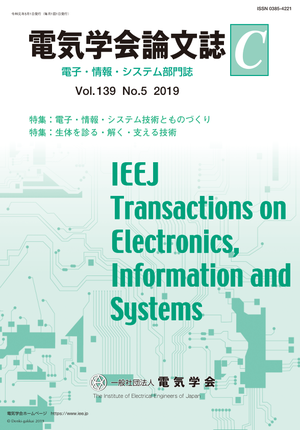ガラス熱インプリント用Ni-Wナノ金型
ガラス熱インプリント用Ni-Wナノ金型
カテゴリ: 論文誌(論文単位)
グループ名: 【C】電子・情報・システム部門
発行日: 2019/05/01
タイトル(英語): Ni-W Nano Mold for Glass Thermal Imprint
著者名: 安井 学((地独)神奈川県立産業技術総合研究所),金子 智((地独)神奈川県立産業技術総合研究所),黒内 正仁((地独)神奈川県立産業技術総合研究所),伊藤 寛明(近畿大学 工学部),荒井 政大(名古屋大学工学研究科航空宇宙工学専攻)
著者名(英語): Manabu Yasui (Kanagawa Institute of Industrial Science and Technology), Satoru Kaneko (Kanagawa Institute of Industrial Science and Technology), Masahito Kurouchi (Kanagawa Institute of Industrial Science and Technology), Hiroaki Ito (Faculty of Engineering, Kindai University), Masahiro Arai (Department of Aerospace Engineering, Nagoya University)
キーワード: Ni-Wナノ金型,パルス電流,めっき,モスアイ構造 Ni-W nano mold,pulse current,plating,Moth-Eye structures
要約(英語): Increasing the pulse current frequency from 0.5 kHz to 5 kHz suppressed the cracking of the Ni-W film. In addition, the film thickness increased from 15 μm to 20 μm. However, the W content of the Ni-W film was around 20 at% and was not affected by the frequency of the pulse current. In the resin mold, the Ni-W film was peeled off. However, Ni type was able to deposit Ni-W film of 78 μm thickness. However, pinholes occurred at the apex of the eye structure of the moth of the Ni-W mold. As a cause of the occurrence of pinholes, it is considered that the hydrogen generated during plating remains in the concave portion of the moth eye structure on the Ni master disk, so it is necessary to prevent hydrogen from remaining in the concave portion.
本誌: 電気学会論文誌C(電子・情報・システム部門誌) Vol.139 No.5 (2019) 特集Ⅰ:電子・情報・システム技術とものづくり 特集Ⅱ:生体を診る・解く・支える技術
本誌掲載ページ: 644-647 p
原稿種別: 論文/日本語
電子版へのリンク: https://www.jstage.jst.go.jp/article/ieejeiss/139/5/139_644/_article/-char/ja/
受取状況を読み込めませんでした


